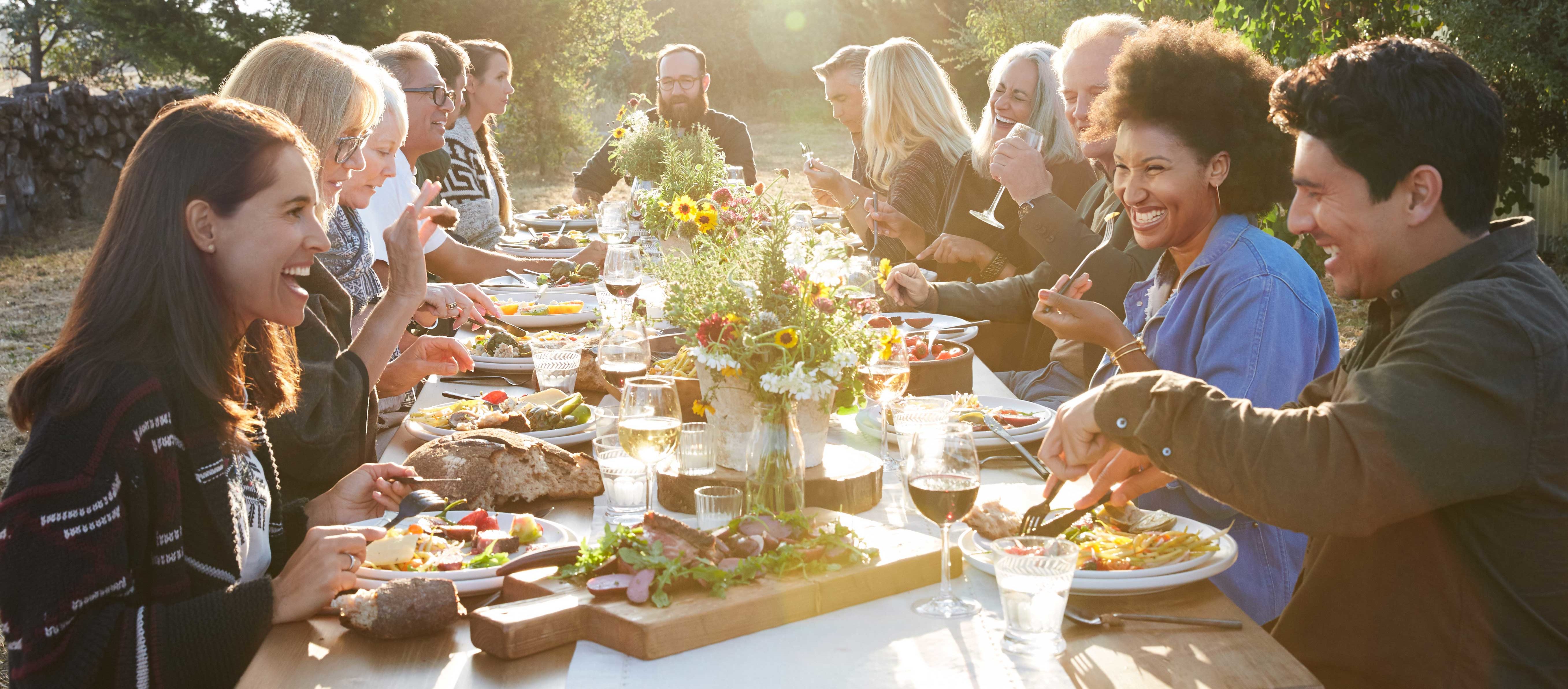The Recipe
Heirloom Tomato and Black Olive Tart
Make this colorful savory tart in late summer when tomatoes are at their flavor peak. Serve in thin slices as an appetizer or in bigger portions with a side salad for lunch. The tart also works nicely as a side dish for a roast leg of lamb or roast chicken.
Wine suggestion: California Pinot Noir or California Zinfandel

Ingredients
Tart dough
- 1 cup (125 g) unbleached all-purpose flour
- 1 teaspoon sugar
- ½ teaspoon sea salt
- ½ cup (115 g) unsalted butter, at room temperature, in 16 pieces
- 1-1/2 pounds (680 g) heirloom tomatoes, cored and sliced ¼ inch (6 mm) thick, ends discarded
- 1-1/2 teaspoons sea salt
- 1 dozen kalamata or black olives, pitted and halved
- 1 tablespoon extra virgin olive oil
- 3/4 teaspoon dried oregano, crumbled fine
- 2 tablespoons (28 g) goat cheese, at room temperature
- 2 tablespoon plain yogurt, or as needed
- 1 small clove garlic, very finely minced
- Basil leaves for garnish
Makes one 9-inch tart to serve 6 to 8
Directions
In a food processor, combine the flour, sugar, and salt and pulse to blend. Add the butter and pulse until the mixture resembles fine crumbs. Sprinkle 1 tablespoon water over the mixture and pulse until it begins to come together into a dough.
Turn the dough out onto a large sheet of plastic wrap and, using the plastic wrap as a barrier to avoid touching the dough, shape the dough into a ball. Wrap in the plastic, then flatten into a thick round disk. Let rest at room temperature for 30 minutes.
Unwrap the dough and place it in the center of a 9-inch (23-cm) tart pan with a removeable bottom. (Do not use a black metal tart pan or the dough will likely overbrown.) Again, using the plastic wrap as a barrier to avoid touching the dough, press the dough with your hand to flatten it until it covers the bottom and sides of the tart tin. You should have just enough dough to make a thin crust with no trim. Take care to make the dough evenly thick or it may burn in spots. Prick the tart shell with a fork in several places. Lightly cover with plastic wrap and freeze for at least 30 minutes or up to 1 day.
Preheat the oven to 375°F (190°C). Place a sheet of aluminum foil in the tart shell to cover the bottom and top with pie weights or dried beans in an even layer. Bake for 15 minutes, then remove the pie weights and the foil. Return the tart pan to the oven and continue baking until the crust is lightly browned all over, about 15 minutes longer. Set on a rack; leave the oven on.
While the tart crust bakes, place the tomato slices on a double thickness of paper towels. Sprinkle evenly with the salt. Let stand for 30 minutes. Pat the surface with paper towels to remove excess moisture. Transfer the slices to a cutting board and cut them in half, taking care to preserve their shape.
Arrange the tomato slices in the baked tart crust in concentric circles, working from the outside in and overlapping the slices. You should be able to fit all or most of the slices but reserve any extra for a salad. Tuck the olive halves into any crevices. Brush the surface with olive oil and scatter the oregano over the top. Return the tart to the oven and bake until the tomatoes are soft and sizzling, about 30 minutes. Cool on a rack for 15 minutes. The tart is best when warm, not hot.
In a small bowl, blend the goat cheese and yogurt until very smooth. Add more yogurt if needed to create a sauce you can drizzle. Add the garlic (use less, if you prefer) and salt to taste.
Remove the tart from the tin and place on a serving platter. Drizzle with the goat cheese mixture and top with a few torn leaves of basil. Serve warm.







